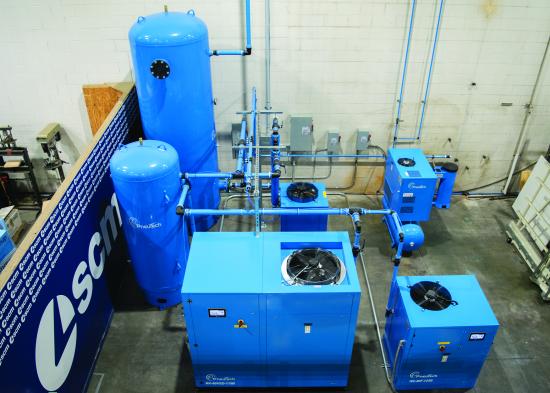Integrated dryer systems play a crucial role in enhancing the performance of compressed air systems. Compressed air is widely used across various industries, from manufacturing to healthcare, and ensuring the quality and reliability of this air is paramount. One of the most common issues with compressed air systems is moisture accumulation. When air is compressed, the temperature increases, and when it cools down, moisture tends to condense. This moisture can damage equipment, corrode pipes, and lead to operational inefficiencies. An integrated dryer system addresses this problem by removing the moisture from the compressed air, ensuring that the air is dry and clean as it travels through the system. By incorporating dryers directly into the system, these units help in maintaining the desired quality of compressed air, preventing issues such as freezing in cold environments, corrosion in pipelines, and damage to sensitive equipment like pneumatic tools or control valves.

Integrated Dryer can be of various types, including refrigerated, desiccant, or membrane dryers, each designed to address specific needs depending on the nature of the compressed air system and the application. Refrigerated dryers work by lowering the temperature of the compressed air to condense the moisture, which is then drained off. This type of dryer is often used in applications where moisture levels are not excessively high, making it an energy-efficient choice. On the other hand, desiccant dryers use materials that absorb moisture from the air, providing a deeper level of drying. This type is typically used in systems where extremely dry air is required, such as in food processing or pharmaceutical manufacturing. Membrane dryers, though less common, use selective permeation through a membrane to remove moisture and are often used in low-flow applications. Integrated dryer systems offer significant advantages in terms of operational efficiency. First, by being built into the compressed air system, they streamline the installation process and reduce the space requirements compared to standalone dryers. This makes the system more compact and easier to maintain.
The integration also ensures that the dryer is optimized for the specific system it is part of, allowing for better performance and energy efficiency. Furthermore, integrated dryers often come with advanced control systems that monitor and adjust the drying process, ensuring that the air quality remains consistent over time. Moreover, these systems improve the overall reliability of the compressed air system. Since moisture is one of the main culprits behind equipment failure, having an integrated drying solution ensures that the air remains free from contaminants that could potentially cause breakdowns or reduce the lifespan of machinery. This leads to reduced downtime, lower maintenance costs, and better overall productivity. Another significant benefit of integrated dryer systems is their ability to handle varying environmental conditions. For example, in industries where outdoor air is compressed, seasonal changes can lead to significant fluctuations in humidity. An integrated dryer system is equipped to deal with these variations, ensuring that the air quality remains stable regardless of external conditions. Additionally, these systems can be configured to match the demands of specific applications, providing more precise control over the drying process.



